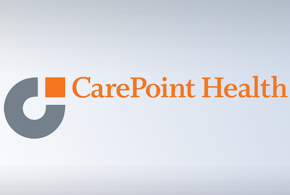As health care companies look to integrate their facilities and IT systems, the challenges of running a business efficiently and effectively grow. Without a robust and highly manageable network infrastructure, an organization can find itself struggling to provide the best possible patient care and still be profitable.
One company that has had to confront this challenge is CarePoint Health, which operates three medical centers in Hudson County, N.J. In 2012, it was faced with the task of tying together three aging hospitals that span 55 medical practices.
“We had an aged architecture and systems from different vendors, and many of them were nearly impossible to connect and support,” says CIO Joel Taylor. “We wanted to be proactive and stay ahead of the curve with IT, but that simply wasn’t possible” with the systems in place.
CarePoint turned to Dell to take its IT infrastructure into the digital age. About a year ago, it transitioned to a completely revamped IT environment that introduced Dell XC Web-Scale Converged Appliances, powered by Nutanix. In addition, the company is now using a secure health care cloud via Dell MSite and Dell Cloud Clinical Archive to address clinical application requirements and various other mission-critical tasks.
“We have a network infrastructure and storage framework in place to support business activities and minimize IT administration and involvement,” Taylor explains. In some cases, projects and tasks that previously required hours—such as a proof-of-concept server—now take minutes to set up and use.
In addition, the IT department now requires only two people to oversee and manage the entire technology environment rather than specific specialists for networking, storage and servers. “Software-defined infrastructure has taken us to the place we really need to be,” he adds.
Generating Healthy Results
The initiative has generated some healthy results. Since deploying the end-to-end solution about a year ago, CarePoint Health has reduced capital expenses by approximately $15 million.
The system initially eliminated the need for about $10 million in the hardware and software investments that would have been required with the previous framework. Over the coming years, these savings will continue to increase.
In addition, by using Dell’s Managed Services, the IT team no longer has to deal with patches, updates and configuration issues. The appliances integrate with Dell’s x86 server platform and Nutanix Acropolis software to deliver an enterprise-class, hyper-converged infrastructure within a virtualized framework.
As a result, teams are able to focus more heavily on innovation and business value. This also ripples out to medical professionals and others in the organization.
“Our goal is to provide our medical professionals with ‘invisible IT’ that makes it easier for them to care for patients and adapt to regulatory and meaningful use changes,” Taylor explains. In fact, he says, with a common platform in place, it’s now possible to embrace digital systems and workflows—including tighter electronic medical record (EMR) integration and the ability to share digital data and images faster and more seamlessly.
“A unified IT platform in now in place,” Taylor reports. “Software-defined networking is where we want it to be. This ultimately translates into a faster, more advanced computing framework that positions the organization for the future.”









